If you have one CD ROM drive and one hard disk, you will need two SATA Data cables and two SATA Power cables—one set of cables per drive.
Each SATA drive requires a SATA Data cable and a SATA Power cable to operate. The SATA cables are provided with the motherboard, and the power cables are provided with the Power Supply Unit.
If you have more than two drives in your computer, you must get an additional data and power cable for each drive.
There are also cases where the SATA power cable would have split ends. That way, you may be able to supply power to multiple drives with a single cable.
Let us look at how many SATA cables you need in depth.
Also Read: Do Motherboards Come with SATA Cables?
TABLE OF CONTENTS
What are the Types of Drives that Require SATA Power and Data Cables?
Three drives require the SATA interface:
1. Hard Disk Drives
These are your average spinning hard drives and are generally the primary storage drive for any computer.
2. Optical Drives (CD/DVD Drives)
From CDs to Blu-Ray drives, they all require the SATA interface.
3. Solid State Drive (SATA SSDs)
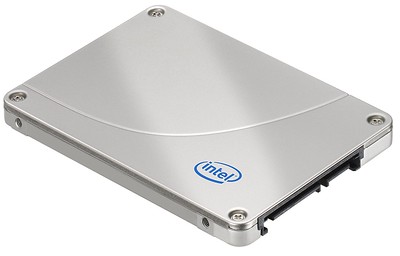
SATA SSDs also require SATA data and power cables. SATA SSDs can reach up to 550 MB/s, whereas an average hard disk drive reaches about 200 MB/s.
Also, do not get confused between SATA SSD and PCIe NVMe SSDs. The latter connects to the PCIe interface. NVMe SSDs, compared to SATA SSDs, are more expensive and require an M.2 slot, which is found in much fewer numbers on motherboards than SATA ports.
The NVMe SSDs can reach speeds of 3500 MB/s on PCIe v3.0 and 5500MB/s on PCIe v4.0.
Also Read:
What Does a SATA Power Cable Look Like?
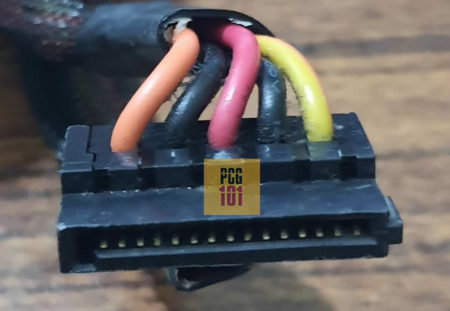
A SATA power cable has a long 15-pin connector. This cable comes with the Power Supply Unit, with one end often connected to the PSU and the other connects to the drive.
Split SATA Power Cables
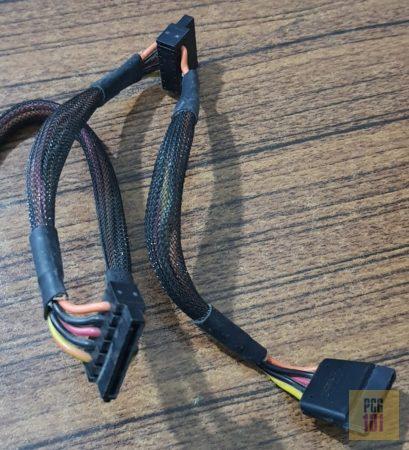
You will often find power cables with split ends, meaning the power cable will have one end connected to the Power Supply Unit and multiple SATA power connectors in series.
That way, you could supply power to multiple drives using a single power cable.
The power cable above, for instance, is a split power cable with three SATA power connectors.
Also Read: Does HDD Come with SATA Cable?
What Does a SATA Data Cable Look Like?
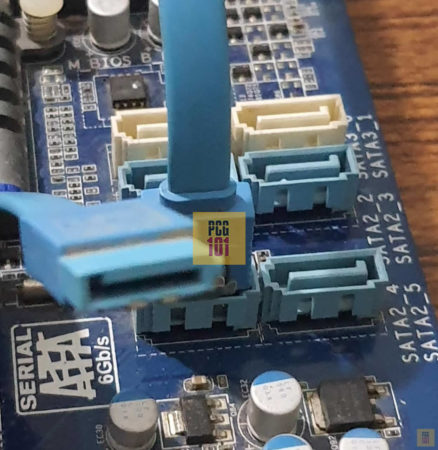
SATA 3 data cables come with the motherboard. Generally, you get about 2-3 SATA cables; if you want more cables, you must procure them separately.
So How Many SATA Cables Do I Need?
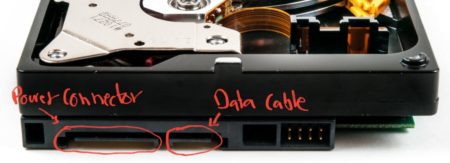
Now that you know the basics of the SATA cables, you should be able to judge how many SATA power or data cables you need depending on how many drives you have.
In the simplest of terms, as far as the POWER is concerned, you can attach one SATA power cable to a drive through the fifteen-pin connector. You may need a single power cable with multiple split ends or multiple individual cables with a single connector coming from the PSU if you have more than one drive to connect.
As far as the DATA cables are concerned, you need a single SATA cable for each drive. Unlike the SATA Power cables, the Data cables cannot have a split end.
Each drive will require an individual SATA Data cable.
The amount of SATA data cables you need depends on the number of drives you have and how many SATA ports you have!
In other words, you cannot attach seven drives to a system with only 6 SATA ports. So with a motherboard with 6 SATA Ports, the maximum amount of SATA Data cables you can have is 6—simple math.
Key Takeaway
The key takeaway from here when building your system is as follows:
- Each SATA drive requires a single DATA cable and a SATA power connector.
- SATA cables attach to the motherboard, and power cables attach to the PSU
- Power cables can have split ends, but SATA DATA cables cannot.
- Ensure you read how many SATA cables you get with the motherboard and how many SATA power connectors you get with your PSU.
- Take note of the amount of SATA ports you have on your motherboard.
Also Read:
How to Add More SATA Ports to Your PC
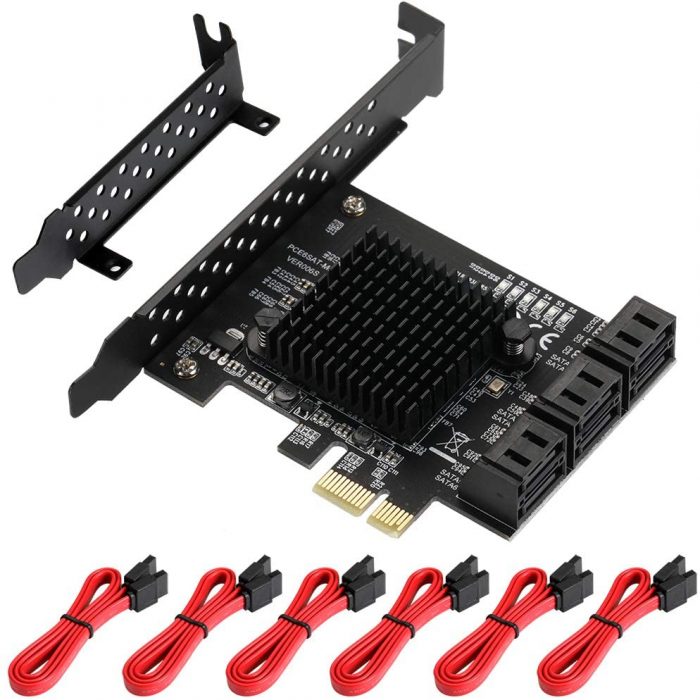
If you need to add more drives to your PC but if your motherboard does not have any additional SATA ports, then you have the following options to increase the port count:
- SATA Hub Port Multiplier
- SATA PCIe Cards
- SAS SATA Expansion Card
We talk in detail about this in the following article: How to Add More SATA Ports to Motherboard?
How to Add More SATA Power Connectors in a Desktop?
You may also need additional SATA power connectors to add more drives to your PC. There are two ways through which this can be done. One is through the use of SATA power splitter cables, and the other is through Molex to SATA adaptor cable (for older PSUs).
We will explore each of these here:
1. Through SATA Power Splitter Cable
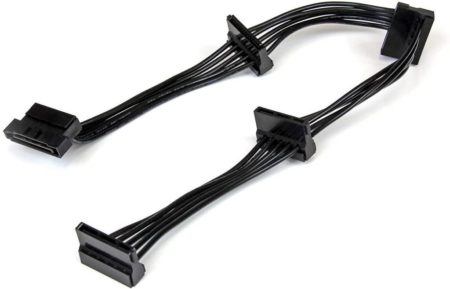
The primary purpose of this cable is to provide power to additional SATA drives on your PC. It also helps avoid the cost of getting a new PSU to accommodate more SATA drives.
It features a male SATA power connector on one end that connects to the female power cable coming from the PSU and eventually breaks out into multiple female SATA connectors, as we saw earlier. These connectors can be used individually to power multiple drives.
The numbers vary for the SATA power connectors that break out from cable to cable. Some cables feature up to four SATA connectors that can power up to four SATA drives, whether hard disks, solid-state drives, or optical drives.
2. Through Molex to SATA Adaptor Cable
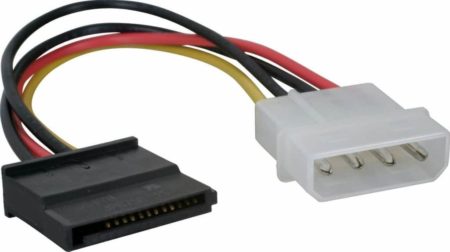
If you have an older PSU that still has Molex connectors, then you can also use a Molex to SATA adapter cable if you run out of SATA Power cables from the PSU.
These do not come with the PSU or the motherboard and need to be procured separately.
Also Read: Can You Use a Laptop Hard Drive on a Desktop?
SATA Connections and Power Requirements
While connecting the drives through SATA power cables, you need to ensure that the PSU is capable enough to supply your computer’s power.
PSU models available today have a wattage ranging from 200-1800 watts. A hard drive consumes 15 to 30 watts, while an optical drive uses about 20 to 30 watts of power.
While these wattage numbers are not much of a concern for an average PC, power consumption becomes a concern if you have a large number of drives connected.
The best way to determine the power consumption of your PC parts and the recommended PSU wattage to get is to use the automated online calculators:
Final Words
We looked in depth at how many SATA cables you need to connect and operate your drives. Essentially, we looked at both the SATA Data and Power Cable requirements.
For an average build, the available SATA power cables or connectors and the provided data cables with the PSU and motherboard should be adequate to meet the requirements of most users.
If you need to add more drives, you must procure more cables and connectors. Always choose high-quality cables that protect you from any mishap risks.
When adding more drives, you must also keep your computer’s overall power requirements in mind.
Frequently Asked Questions
1. How many SATA cables do I need for a basic PC build?
For a basic PC build with a single storage drive, you typically need one SATA cable to connect the drive to your motherboard. Most motherboards come with at least two SATA cables included in the box, so you should have an extra cable for future use.
2. How many SATA cables do I need for a PC build with multiple storage drives?
The number of SATA cables you need for a PC build with multiple storage drives depends on the number of drives you have. Each storage drive requires one SATA cable to connect to the motherboard. So, for example, if you have two storage drives, you will need two SATA cables.
3. Can I use SATA cables for other purposes besides connecting storage drives?
SATA cables are designed specifically for connecting storage drives to your motherboard or other components, and should not be used for other purposes. Using a SATA cable for a different purpose, such as connecting a fan or lighting component, could cause damage to your system or result in poor performance.
4. What is the maximum length of a SATA cable, and does cable length affect performance?
The maximum length of a SATA cable is approximately 1 meter (3.3 feet). Cable length can potentially affect performance, as longer cables can lead to signal degradation and reduced transfer speeds. It is recommended to use the shortest cable possible that will reach the necessary components.
5. Can I use SATA cables to connect other components besides storage drives, such as fans or lighting?
SATA cables should not be used to connect other components besides storage drives. Doing so can potentially cause damage to your system or result in poor performance. Instead, it is recommended to use cables specifically designed for the component you are connecting, such as fan cables or lighting cables.

I love the way you write,
clear & succinct, easy to understand without the jargon,
thankyou.
Michael.
Glad you liked it 🙂